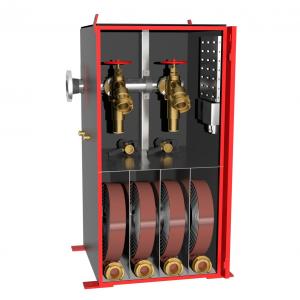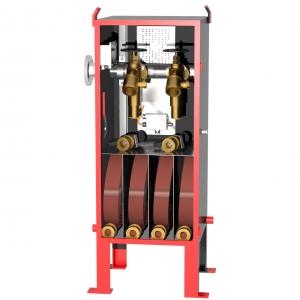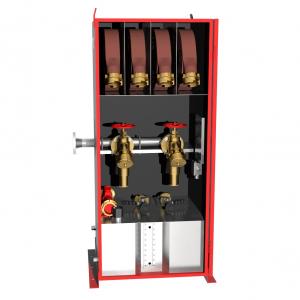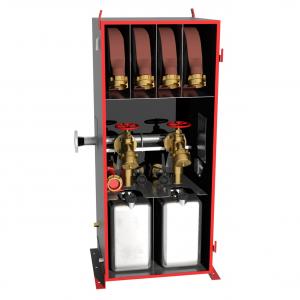Firewater hydrants
Hydrants are installed in open deck areas, walkways, and escape routes for manual firefighting. Hydrants can also provide heat shielding for protecting personnel while accessing valves during a fire. The quantity of firewater hydrants is calculated based on reaching all areas of the platform from two different hydrants.
The operation of a hydrant requires the removal and assembly of stored fire hose. In order to operate the hydrant safely the hose must lay on the deck in smooth curves. The nozzle should be closed and the hydrant valve slowly opened filling the hose before opening the nozzle.
FPE Sontum designs robust hydrants to meet the demanding requirements of the oil and gas industry. The standard design is AISI 316 stainless steel cabinet with two hydrant valves connected to a common manifold and hose storage racks capable of storing four hoses. All valves and piping are of titanium construction. FPE offers hydrants with foam application for fighting Class B fires.
Project design specifications consistently change. Therefore, FPE Sontum offers options for CuNi or Super Duplex SS piping, cabinet insulation and heaters for cold weather, and pressure control to safely operate the hydrant. Where possible hose size and length can be specified by the project along with the preferred fire-fighting nozzle. Click on the following models to review their specific design data and options.







